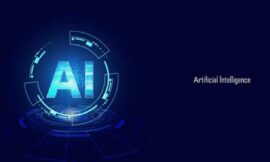Artificial intelligence (AI) is gaining ground in various sectors, and medicine is no exception. In an effort to improve efficiency in the diagnosis of rare diseases, the Community of Madrid has adopted DxGPT, an AI-based tool.
Rare diseases pose a considerable challenge to the healthcare system. On average, patients spend up to five years and see up to seven specialists before receiving an accurate diagnosis. This scenario highlights the need for more efficient solutions.
DxGPT: A new ally for doctors
DxGPT, or Diagnosis Generative Pre-trained Transformer, is an artificial intelligence-assisted diagnostic tool that is based on the GPT-4 language model developed by OpenAI. This tool has been designed with a very specific objective: to streamline and improve accuracy in the diagnosis of rare diseases, an area that has historically been challenging for the health system.
How does it work?
The operation of DxGPT is intuitive and resembles that of a chatbot. Doctors or even patients can enter a series of symptoms and other clinical data in a text box. Using this information, DxGPT processes the data and, in a matter of seconds, generates a list of possible diagnoses. This list not only includes the name of the diseases but also additional information that may be useful to the doctor, such as recommended tests to confirm the diagnosis.
Interface and usability
The tool is presented in the form of a web application, which facilitates its integration into hospital information systems. The interface is simple and designed to be easily used by medical professionals, without requiring specialized knowledge in technology or artificial intelligence.
Collaboration with existing infrastructure
DxGPT does not operate in a technological vacuum. It integrates with the cloud technology infrastructure provided by Microsoft through its Azure OpenAI service. This ensures that the tool has the necessary support in terms of processing capacity and data storage, crucial elements for its efficient operation.
Personalization and continuous learning
One of the advantages of DxGPT is its ability to learn continuously. As more data is entered and more diagnoses are performed, the system becomes more accurate. This is especially useful in the field of rare diseases, where each new case can provide valuable information for future diagnoses.
It is not a substitute, it is a complement
It is crucial to understand that DxGPT is not intended to replace the experience and clinical judgment of physicians. Rather, it acts as a complement that enhances the diagnostic capabilities of medical personnel. It helps reduce the time that would normally be required to reach a diagnosis, allowing for faster medical intervention and ultimately improving patient outcomes.
In this context, DxGPT is positioned as a valuable ally for doctors, especially in the field of rare diseases, where every minute counts and where an accurate diagnosis can make a significant difference in the patient’s quality of life.
Collaboration with Microsoft
This initiative is the result of a collaboration between the Community of Madrid, Microsoft and the 29 Foundation. Microsoft provides the necessary infrastructure through its Azure OpenAI Service cloud platform.
While DxGPT is a promising tool, it is crucial to take into account the limitations and ethical considerations. Microsoft ensures that the system meets all security and ethical standards, but the ultimate responsibility lies with the user.
The implementation of DxGPT could have a significant impact on the efficiency of the health system, especially in the care of rare diseases that require rapid and accurate diagnoses.
The adoption of tools like DxGPT raises broader questions about the role of AI in medicine and how these technologies can be used ethically and effectively to improve healthcare in the future.
More information at news.microsoft.com



